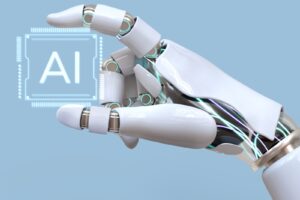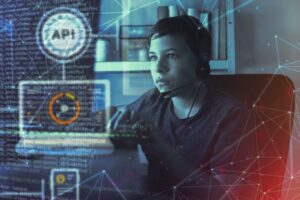In recent years, generative AI has emerged as a powerful force in the design world, transforming how creatives approach everything from graphic design and branding to UX/UI and product design. By leveraging machine learning algorithms, generative AI can create original content, automate repetitive tasks, and assist designers in pushing the boundaries of creativity.
This evolution isn’t just about efficiency — it’s about redefining creativity itself. With the growing demand for Generative AI Development Services and Generative AI Consulting Services, businesses are rapidly embracing this technology to gain a competitive edge in design and innovation.
What is Generative AI in Design?
Generative AI refers to algorithms that can generate text, images, audio, video, and even 3D models with minimal human input. In design, these AI systems learn patterns from existing data (such as artwork, layouts, color palettes, and typography) and then use that knowledge to produce new, innovative designs.
Many leading generative AI services like Adobe Firefly, Midjourney, DALL·E, and Canva’s AI features are empowering both designers and organizations to scale their creative output more efficiently than ever before.
Key Areas Where Generative AI is Transforming Design
1. Visual Content Generation
Generative AI can instantly produce high-quality visuals from simple prompts. Designers can now:
-
Generate illustrations or graphics without starting from scratch.
-
Experiment with multiple versions of a design idea in minutes.
-
Fill in missing elements of a design using context-aware AI.
For example, AI-powered tools like Midjourney and DALL·E can transform a text prompt like “a futuristic cityscape at sunset” into stunning artwork — a capability that many Generative AI Development Services are now integrating into creative workflows.
2. Automated Branding & Identity Design
AI can help build brand kits — logos, fonts, color schemes — in seconds. Startups and small businesses can:
-
Generate logo variations based on company name and industry.
-
Create social media assets and templates automatically.
-
Get AI suggestions for brand tone and messaging.
This makes branding more accessible and affordable, especially for small teams who can benefit from affordable and scalable generative AI services.
3. UX/UI Design Optimization
Generative AI assists UX designers by:
-
Creating wireframes and UI layouts based on user goals.
-
Testing different user flows with simulated user interactions.
-
Recommending changes based on usability data.
Tools like Uizard, Galileo AI, and Figma’s AI features are examples of how Generative AI Consulting Services can guide teams in building more intuitive and user-friendly products.
4. 3D Modeling and Product Design
In product design and architecture, AI can generate 3D models based on specifications, significantly speeding up prototyping. Designers can:
-
Generate variations of a physical product design.
-
Optimize structures using AI-simulated stress tests.
-
Visualize interiors and buildings in VR-ready formats.
Benefits of Generative AI in the Creative Process
-
Faster Turnaround Times: Designers can go from idea to concept in minutes, speeding up workflows.
-
Enhanced Creativity: AI offers suggestions and ideas designers might not have thought of.
-
Cost Efficiency: Fewer manual hours mean reduced costs for clients and agencies.
-
Accessibility: Non-designers can now create professional visuals with minimal training.
Many Generative AI Consulting Services are focused on helping creative agencies and in-house design teams integrate these benefits into their operations.
Challenges and Ethical Considerations
While generative AI unlocks many possibilities, it also brings challenges:
1. Originality and Copyright Issues
AI-generated designs often borrow from existing data. Who owns the final design? Are we inadvertently copying someone else’s work?
2. Job Displacement Concerns
Some fear that AI will replace human designers. However, most experts agree AI will augment rather than replace — empowering creatives to focus on high-level ideation.
3. Bias in AI Models
If the training data is biased, the outputs can reflect stereotypes or skewed aesthetics. Responsible AI development and human oversight are essential.
This is why Generative AI Consulting Services often emphasize ethical AI development and usage strategies.
How Designers Can Embrace AI
To stay relevant, modern designers should:
-
Experiment with AI tools: Start small with AI plugins in Photoshop or Figma.
-
Focus on strategy: Let AI handle tasks like resizing or variations, while you focus on brand storytelling and UX.
-
Learn prompt engineering: Mastering how to talk to AI can greatly enhance results.
-
Stay ethical: Use AI as a tool, not a crutch. Avoid using AI-generated art without proper attribution or licenses.
Working with generative AI development services can also help businesses build custom solutions tailored to their creative workflows.
The Future of Generative AI in Design
Generative AI is not just a trend — it’s a paradigm shift. As AI continues to evolve, we can expect:
-
Real-time collaboration between humans and AI during design sessions.
-
Smarter design systems that learn your style over time.
-
Seamless integration of AI across the entire creative workflow — from idea to execution.
Generative AI services will play a crucial role in helping creative industries unlock new levels of innovation and efficiency.
Final Thoughts
Generative AI is transforming the creative industry, not by replacing human designers, but by enhancing what they can do. It’s a tool that can spark inspiration, streamline production, and democratize design.
With the help of specialized Generative AI Development Services and Generative AI Consulting Services, creative teams can integrate AI responsibly and effectively — blending human emotion and AI precision to shape the future of design.



